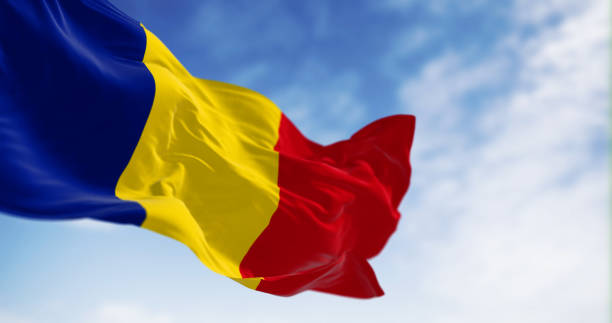For a long time, France has been the most innovative country in Europe when it comes to banking and finance. The government has done a lot in the past few years to update its payment systems so that they are in line with wider EU initiatives to develop a uniform digital financial infrastructure. The EU legislation that gets rid of fees for fast bank transactions is one of the major developments. This makes them easier for both businesses and customers to use. The purpose of this regulation decision is to create a payment system across Europe that is as fast, safe, and easy as doing business in your nation.
French payment systems are made up of three main parts: the Carte Bancaire (CB) national card network, the Single Euro Payments Area (SEPA), and the growing popularity of rapid transfers. All of these factors work together to make up France's digital payment system, which allows for both modern, real-time internet purchasing and traditional banking.
A Distributed European Framework in SEPA France
The Single Euro Payments Area (SEPA) is one of the biggest attempts in Europe to connect its financial systems. It is particularly essential to France because it makes it easy for people, businesses, and organisations to send and receive money in euros all around the EU, just like they would at home. SEPA makes it easy to bank across borders by standardising account information and making sure that transactions are handled efficiently and safely throughout the region.
Under SEPA, French citizens and enterprises just require the International Bank Account Number (IBAN) and the Bank Identifier Code (BIC) to send money. This standardisation has made trading between countries considerably easier, as well as cutting expenses and making the French banking system work better. SEPA is not only useful, but it's also vital for companies that conduct a lot of business in Europe.
Credit transfers, direct debits, and payments by card are only a few examples of the kinds of transactions that SEPA covers. SEPA is a key aspect of France's financial integration with Europe because it is used a lot for sending money both inside and outside of France.
Schedules and information about processing SEPA transfers
SEPA works well, but it doesn't always happen right away. The banks and the type of transaction will determine how long it takes to process. For instance, transfers between accounts at the same French bank are generally done on the same day. In France, transfers between banks normally take one to two working days. However, transfers between countries in the SEPA zone can often take up to three days.
These periods for processing reflect both the good and negative sides of SEPA. On the one hand, it makes transactions in Europe more consistent and easier to understand. But these days, it doesn't always operate as quickly as businesses and customers want it to. People sought SEPA immediately in France, a system created particularly for handling immediate transactions, because of this gap.
Also read: How a 3DS-enabled Payment Gateway Helps Reduce Chargebacks on Your eCommerce Business
The National Card Program, or Carte Bancaire, in France
SEPA is now increasingly essential for payments between nations, although Carte Bancaire (CB) is still the most common means of payment in France. In the 1960s, the first national card program in Europe that is still operating strongly and producing money began. Carte Bancaire France is the most common way to pay for products in person and on the internet. It takes care of more than 70% of all card transactions in the country.
Customers may easily receive what they need using CB cards because they are accepted in many places, including restaurants, retail, internet stores, and ATMs. Carte Bancaire is very useful since it may be used as a national payment system and to connect to worldwide networks like Visa and Mastercard. This guarantees that French clients can use their CB cards in France and other countries.
When you look at Carte Bancaire and SEPA in a wider picture, you can see that the French payment system is made up of numerous parts. CB is still focused on card transactions in the country, but SEPA enables euros flow around Europe. They work together to make sure that businesses and customers can pay in safe, effective, and flexible ways.
The Growth of Instant Transfers in France
The rise of instant transfers is likely the most important new thing to happen in French payments in a long time. The SEPA Instant Credit Transfer (SCT Inst) program, which began in 2017, made it possible to make payments right away. This makes it possible for money to transfer between accounts in less than ten seconds. Regular SEPA transactions depend on bank hours and settlement cycles, but fast payments function all the time, even on weekends and holidays.
There are many good things about it. Customers can get money immediately with rapid transfers, whether they are paying rent, shopping online, or sending money to a friend. Businesses may transact business in real time more easily, with less risk of settlement, and with better cash flow thanks to instant payments. This is also good for banks and fintech companies since they can leverage instant payment infrastructure to create new services like mobile payment apps or e-commerce systems that enable users to get their money straight away.
But France hasn't adopted rapid payments as quickly as most thought it would. A key reason for this is that banks used to charge a lot of money for instant transactions. Many organisations and customers preferred to maintain utilising normal SEPA transfers because the costs were higher than the benefits.
SEPA Instant Payments in France
This pause will expire now. The European Union said in 2025 that immediate transfers had to be free in addition to conventional SEPA transactions. This reform will have a huge impact on France. Now that costs have been removed, businesses and customers should be able to use rapid payments.
People all throughout the country are expected to use it a lot more. Faster settlements will improve e-commerce, make peer-to-peer payments easier, and provide small firms with rapid access to cash, which will make them more flexible and liquid. In summary, SEPA Instant France could be the next way to pay for things online.
Also read: Eswatini’s Payment Rails & How They Work – EFT, Mobile Money & Financial Inclusion
The Future of French Payment Systems and How Rules Change Them
The adjustments to the rules that allow free, quick transfers aren't only for convenience. They give a better idea of what Europe's financial future will look like, one where payments between countries are rapid, easy, and safe. This implies that France will be better able to compete in the global digital economy, collaborate more closely with its European allies, and maintain its banking and financial systems up to date.
French payment systems will likely see increasing cooperation between banks and fintechs, more usage of online and mobile payments, and continual improvements in security and user experience. SEPA Instant France lets the country do business across borders in real time, and Carte Bancaire France is still a good option for doing business within the country. This puts the country in a solid position to continue being the leader in Europe's financial evolution.
How Payment Rails Can Help Industries Work Together
Businesses can respect the rules and make things easier for clients by using France's payment rails, such as SEPA, Carte Bancaire, and rapid transfers. But it can be hard to keep track of more than one payment system, especially for businesses that work with people all over the world.
This is where Transfi and services like it come in. Businesses may easily do business in both domestic and overseas markets thanks to Transfi's unified infrastructure, which includes SEPA France, Carte Bancaire France, and fast payment solutions. Transfi speeds up and makes things more reliable for businesses that need to handle recurring payments, settle payments in real time, and support digital payment strategies in many countries.
Conclusion
France has a number of ways to pay, including Carte Bancaire France, SEPA France, and immediate transfers. They are a one-of-a-kind blend of ancient and new ideas. Carte Bancaire is a safe and dependable national card system. SEPA makes sure that everything works well with Europe, and quick transfers give modern digital commerce the speed it needs.
The EU's choice to get rid of costs for quick transfers has made it easier for people to use them. Because of this, France is starting a new era of payments that are faster, safer, and easier for everyone to use. Both enterprises and users will benefit from a system that blends the stability of existing infrastructure with the power of new digital technology.
FAQs:
1. What is SEPA France, and how does it work?
The EU's Single Euro Payments Area includes SEPA France. This implies that consumers and businesses in France can send and get euros all around Europe just as simply as they can in France.
2. What does Carte Bancaire France accomplish for payments?
France's national card payment system is called Carte Bancaire. A lot of people use it to buy things online and in stores. It works with Visa and Mastercard to make sure that cards can be used anywhere in the world, and it also handles most transactions in the US.
3. How long do SEPA transfers normally take in France?
You can make transfers inside the same bank on the same day, but regular SEPA transfers usually take one to two working days. Cross-border SEPA payments might not go through for up to three working days.
4. Are payments that happen right away free in France?
Yes, because of a provision in the EU that stipulates banks can't charge extra fees for ordinary SEPA transactions, quick payments in France will be free starting in 2025.
5. How will quick payments change the way people pay in France?
Instant payments should become highly popular once the fees are gone. This will help businesses with their cash flow, make online shopping easier, and speed up and simplify transfers between people.
Table of Contents
Suggested Article
Explore our products

Make global payments at the speed of a click

Accept payments, remove borders.

Unlock Seamless Digital Currency Transactions Anywhere








.png)














